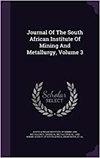手持XRF分拣废旧耐火砖,帮助回收
IF 0.9
4区 材料科学
Q3 Materials Science
Journal of The South African Institute of Mining and Metallurgy
Pub Date : 2023-02-23
DOI:10.17159/2411-9717/1928/2023
引用次数: 1
摘要
提出了一种改进的方法,用于评估在炼钢工业中广泛使用的MgO-C和Al2CO3-MgO-C耐火砖的经济可行性和有效性。由于每年大约有28mt耐火砖被丢弃,因此回收它们是合乎逻辑的。当炉窑和钢包重新内衬时,用过的耐火砖会混合在一起,需要在回收前进行分类。本研究检查了手持式x射线荧光分析仪(HH-XRF)的使用,以区分废氧化基和氧化碳基耐火材料,特别强调废MgO-C (MC)和Al2O3-MgO-C (AMC)砖。对18种氧化碳耐火砖以及镁铬铁矿和铝土矿基耐火材料进行了HH-XRF分析。利用x射线衍射、反射光光学显微镜和扫描电子显微镜与能量色散光谱对MgO-C和Al2O3-MgO-C砖进行了表征,以证实HH-XRF分析的准确性。本研究还强调了HH-XRF分析仪对待分选耐火砖的校准的重要性。HH-XRF在清洗前后成功地区分了不同的氧化碳基耐火砖。这一结果很重要,因为它证明HH-XRF提供了一种方法,可以快速可靠地对废MC和AMC砖进行分类。本文章由计算机程序翻译,如有差异,请以英文原文为准。
Hand-held XRF sorting of spent refractory bricks to aid recycling
An improved methodology is presented for assessing the economic feasibility and effectiveness of recycling MgO-C and Al2CO3-MgO-C refractory bricks, which are widely used in the steelmaking industry. Since approximately 28 Mt of refractory bricks are discarded each year, it is logical to recycle them. When furnaces and ladles are relined, the spent refractory bricks become mixed up, and need to be sorted before recycling. This study examined the use of a hand-held X-ray fluorescence analyser (HH-XRF) to distinguish between spent oxide-based and oxide-carbon-based refractory materials, with special emphasis on spent MgO-C (MC) and Al2O3-MgO-C (AMC) bricks. HH-XRF analysis was conducted on 18 oxide-carbon refractory bricks as well as on MgO-chromite and bauxite-based refractories. X-ray diffraction, reflected light optical microscopy, and scanning electron microscopy with energy dispersive spectroscopy were used to characterize the MgO-C and Al2O3-MgO-C bricks to confirm the accuracy of the HH-XRF analyses. This study also underlined the importance of calibrating the HH-XRF analyser for the refractory bricks to be sorted. The HH-XRF was successful in distinguishing between the different oxide-carbon-based refractory bricks both before and after cleaning. This result is important as it proves that HH-XRF provides a method whereby spent MC and AMC bricks can be sorted quickly and reliably.
求助全文
通过发布文献求助,成功后即可免费获取论文全文。
去求助
来源期刊
CiteScore
1.50
自引率
11.10%
发文量
61
审稿时长
4-8 weeks
期刊介绍:
The Journal serves as a medium for the publication of high quality scientific papers. This requires that the papers that are submitted for publication are properly and fairly refereed and edited. This process will maintain the high quality of the presentation of the paper and ensure that the technical content is in line with the accepted norms of scientific integrity.

 求助内容:
求助内容: 应助结果提醒方式:
应助结果提醒方式:


